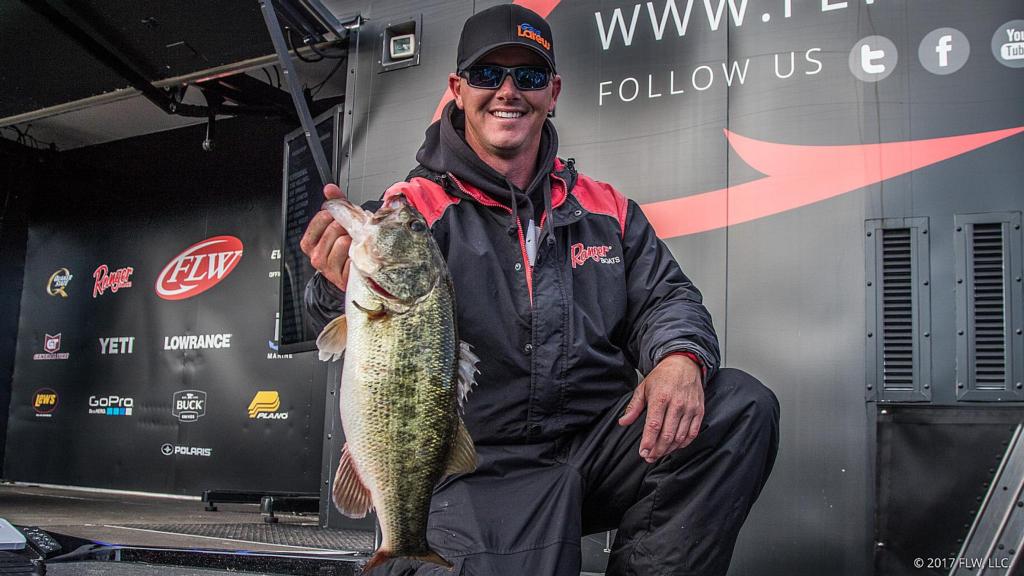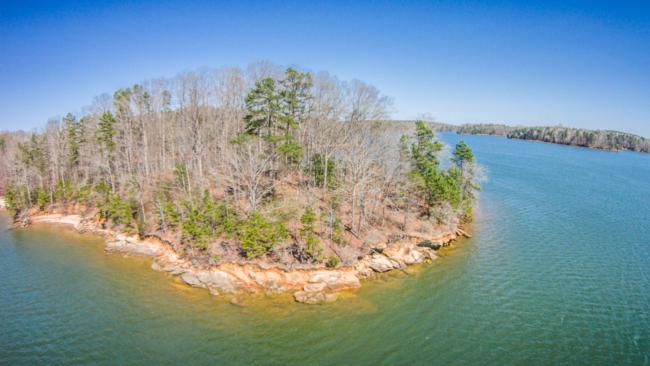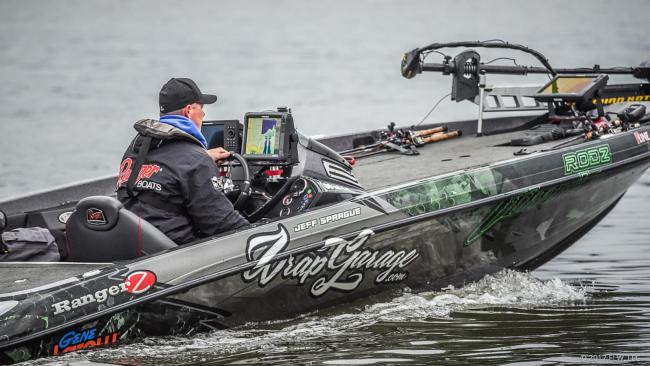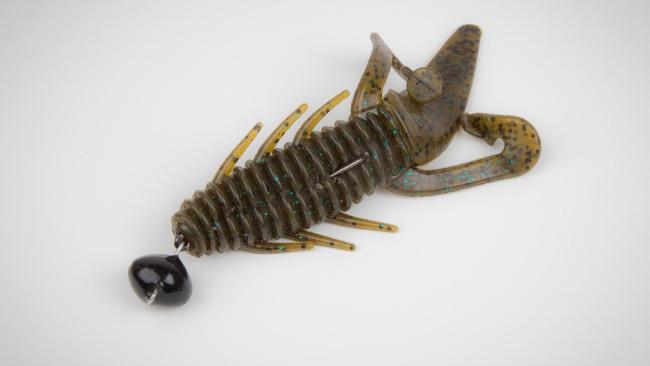Sprague’s Tips for Finding Staging Bass
If you can find fish grouped up this time of year, you’ve potentially found a tournament-winning spot

This time of year, unless the bass are full on spawning, FLW Tour pro Jeff Sprague’s strategy for success is to seek out prespawn staging areas where bass set up on their way to where they’ll spawn.
The best staging areas are what Sprague calls “game changers” because they hold multiple fish, they replenish and bass will often stop on them again after the spawn.
Exactly what to look for varies based on conditions, region, lake and even within different areas of one lake, but there are consistent features that make for a good staging area.
Depth
Depth is relative in bass fishing, but usually the last piece of structure or cover near a spawning area with access to deep water is the basic ingredient for a staging area.
“They might move into 4, 5, 6 feet of water, and there might be a creek channel right behind them in 18,” says Sprague. “As long as it comes close to deep water, that’s what you want, but there are so many variations to deep water. If they’re in 2 feet of water and there’s 7 feet behind them, that can be deep water to the fish. Spotted or smallmouth bass may spawn in 5 to 12 of water on the main lake, and then behind them is 40 feet of water. That’s deep to them.”
The deep-water access gives bass an “out” when cold fronts knock back the water temperature or a water-level change occurs.
What to look for
Deep-water access is key, but the fish don’t set up just anywhere. Various types of cover and structure can provide staging spots for bass, and they don’t all stage on the same types of places in one lake. For instance, at the Lake Travis Tour event, Sprague says bass were staging on shallow rocky areas on the ends of flats between bushes and in 25- to 30-foot-deep ditches. In each case, they could back off to deep water if needed, and they were a short distance from spawning flats.
Sprague says the best staging areas act as “choke points” that funnel bass to places where he can intercept them. A long point extending out into a creek is a perfect example. As bass migrate in along the creek channel, they’ll eventually come to the point, which provides a good place to hold up until it’s time to spawn.
“A lot of fish will find something on that point – maybe a drop or a big root ball – and big females will stage on it,” he says.
If the spot is deep enough, Sprague suggests graphing over it to look for fish. Though that’s not always an option on lakes where bass stage on shallow points or in shallow ditches and grass. In those cases, you just have to fish for them.
Other high-percentage spots include bluff ends, rock piles, stump fields, creek bends and marinas.
Finding the mother lode
Sprague says it’s important for anglers to recognize that bass don’t stage according to any specific rules. They might set up on a middepth point in a creek before moving to a shallower point or channel swing farther back, and then they’ll spawn. Both stopping points are staging areas.
To Sprague, however, it pays off in tournaments to try and locate bigger staging areas.
“You’re looking in an area that’s a major spawning area,” he says, “not just a small pocket. You’re looking in a bigger bay or a bigger area where those fish are coming off the main lake and stopping. That’s where you’re gong to find a giant school or several days’ worth of fish that can win a tournament.”
Another key to finding groups of staging fish is to locate transition pathways. Ditches, creek channels, steep banks and seams through hydrilla beds all funnel bass into the shallows. Bass will set up on a key spot along these pathways – such as the previously mentioned long point or a large stump or a turn in the grass edge – but they can also be caught along the way.
Sprague cites the ditch that Buddy Gross found in a deep hydrilla bed to win the Costa FLW Series event at Lake Seminole as a good example of a transition pathway. Bass were staging on the deep edge of the ditch, where it formed a cut in the outer wall of the hydrilla bed. Gross targeted that cut for many of his fish, but he also worked up and down the ditch into shallower water.
Catching staging fish
Conditions really dictate how to catch staging bass, as tactics can range from aggressive to very subtle.
“Sometimes we have to fish for them a little bit slower in the springtime, just because the water is a little bit colder,” says Sprague. “You might have to jerkbait them off a point. Sometimes when those fish are staging out there off long points, that’s a really good bite. You can never go wrong with a [Gene Larew] Biffle Bug. That’s a great tactic. If the fish are going to eat, it’s going to be a large meal. It’s that time of year when they’re gorging if they do eat. It [the Biffle Bug] screams big crawdad, and it’s an easy meal.”
Dragging jigs and Carolina rigs works, too, and various crankbaits and lipless crankbaits can produce when bass stage in shallower areas or around grass.
The last key is to be prepared to move when bass start to move up. Sprague says they can vanish overnight when the water temperature is right for them to start moving to the beds. But if you’ve found a staging area, you’re already on the right track to stay on their tails as they work their way in for the spawn.



